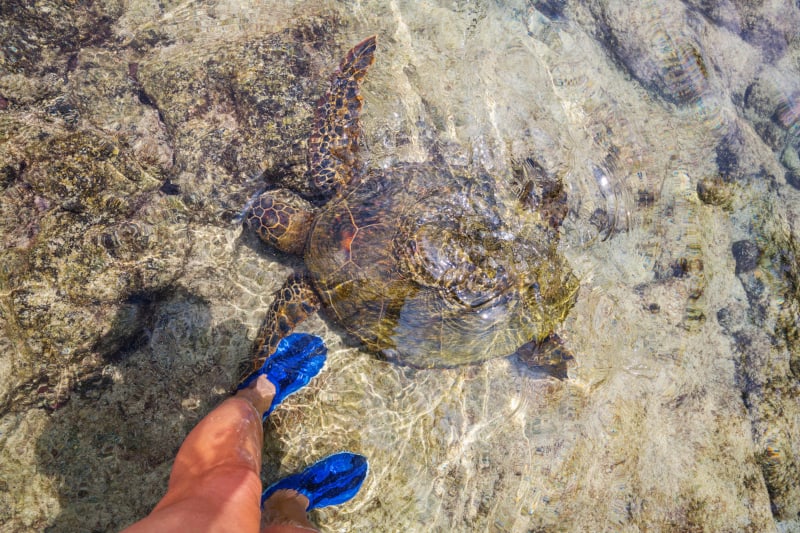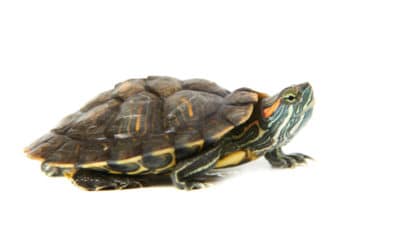If you have a turtle, you definitely take care of it and want what’s best for it. That’s why, when you want to create perfect conditions for your beloved pet, sometimes you may wonder if it ever gets cold. Firstly, you have to bear in mind that temperature matters. Turtles do get cold and it may be dangerous when the temperature falls below a certain point. Turtles are cold-blooded animals and temperature is vital when it comes to their survival.
In this article I would like to provide you with some answers to your most important questions connected with the subject matter. I own a turtle myself and I’m interested in how these animals live. Also, I have attended a wide range of courses associated with breeding turtles, therefore. Therefore, you can be sure that all the information in this article is reliable. You will find out how come that turtles get cold, what the acceptable temperature for them is and what the symptoms of turtles getting cold are.
How come turtles get cold?
First of all, turtles are known to be reptiles and reptiles are considered to be ectothermic animals. In practice it means that they are not able to control their body temperature. If they want to stay warm and cozy, they have no other choice but to depend on the heat coming from the surroundings.
To understand how it really works, it’s good to look at their daily routine. Your pet is likely to divide its time into being in the water and basking in the sun. Turtles do so as they need water to adjust to lower temperature and, later on, when they feel too cold, they climb ashore to spend some time in the sun.
Furthermore, when it comes to basking in the sun itself, it’s of huge importance for turtles. It helps them to synthesize calcium and Vitamin D. What’s more, the sun helps them raise their body temperature and compensates for the heat turtles lose while swimming in the water.
Nevertheless, turtles cannot stand high temperatures for so long and, then, they feel the need to come back to the water to cool off. This is how this whole cycle works.
What is the acceptable temperature for your turtle?
If you want to know what temperature your turtle may stay in, you need to take notice of the fact that turtles have different endurance levels for both heat and cold. Your pet needs temperatures in the range of from 75F to 86F. However, it’s still possible for turtles to survive even when the temperature falls some degrees below this range. Nevertheless, it will affect their metabolism.
What’s more, it’s crucial to remember that despite turtles’ ability to hibernate in the cold, eventually these animals may die because of longer exposure to extremely low temperatures. Therefore, turtles cannot live on land when there’s a prolonged winter with temperatures reaching the freezing point. The only exception are box turtles as they have higher endurance.
It’s also worth mentioning that if a turtle lives in the water, it’s more resistant as far as freezing temperatures are concerned. Of course, it’s possible as long as the surface of the water isn’t frozen. If such a situation occurs, it deprives these animals of oxygen.

The symptoms of your turtle getting cold
Now you know that your turtle can get cold. However, you may still wonder what the symptoms of your pet getting cold are. Here I come with the answer.
Turtles are a species which is vulnerable when it comes to the cold. They are unable to do their normal activities if they are exposed to the low temperatures for too long. Moreover, these animals’ metabolism slows down, their blood circulation reduces and your beloved pet may become very lethargic. As a result, turtles start hibernating.
What’s also interesting, when turtles’ metabolism slows down, they do not need so much oxygen since they need less energy to perform their activities. In such a situation turtles strongly rely on their fat reserves. In these conditions they wait until the temperature rises
You have to observe your pet carefully to notice if it gets cold. If this happens, your turtle will definitely be tired, less active and a little bit quieter. Also, it will sleep a lot and eat less. If your turtle has some water tank, you will see it basking in the light for much longer. If turtles feel cold, they frequently climb ashore so as to warm their body.
If you miss the symptoms, your turtle may hibernate eventually which is very dangerous when it’s ill or underweight. Feeling cold for too long may also cause some sickness. You need to bear in mind that it’s necessary to check the temperature of your pet’s enclosure. To do so, you can use a thermometer. If the temperature is too low, you are allowed to use an internal heater to raise the temperature to make your turtle feel comfortable.
Turtles and hibernation
When there is cold outside, turtles start the hibernation process. It’s a state which some mammals and reptiles, such as turtles, enter in when the temperature falls down. In practice it means that if your turtle hibernates, it will sleep this entire time and, consequently, it won’t eat and drink, it will use much less energy and its metabolic rate will reduce.
To be more specific, when turtles’ metabolism slows down, their hearts start slowing down as well as all the processes in their bodies. It’s normal for turtles’ hearts to beat between 40 and 45 times per one minute. However, when it comes to hibernation, hearts beat only around 10 times per one minute.
Also, what may be shocking, while hibernating these animals are able to survive without oxygen even up to 5 months. As far as drinking and eating are concerned, turtles can live without water and food from 5 up to 8 months. These numbers are huge.
Nevertheless, the hibernation process has a wide range of drawbacks. When turtles fall asleep, all of the lactic acid accumulates in their bodies and it’s difficult for them to get rid of it. When they wake up, they will definitely experience terrible muscle cramps all over their bodies.
What’s more, all of the calcium and magnesium turtles have stored in their shells help them to neutralize the lactic acid. However, if they haven’t stored much of these minerals, there will be a lot of lactic acid in their bodies. In such a situation turtles may not wake up from hibernation at all.
Remember about the ideal heat lamp!
If you want to help your turtle get warm, you are free to use some heat lamps. However, you have to be careful while choosing one since inappropriate heaters may cause a lot of problems, such as painful burns and electrocution.
Safety is the most important for your pet. That’s why, when you are ready to buy a heater, check whether it’s equipped with auto shut off as well as shatterproof material. Furthermore, shockproof design also matters.
Light is crucial for turtles as it provides them with essential Vitamin D3. It strengthens their bones and organs. To make your turtle feel comfortable, you can choose a two-bulb set which consists of a UVB light as a basking light. Also, a mercury vapor lamp can be a successful purchase because it provides turtles with heat, UVA and UVB.
Now you know if turtles get cold
Yes, turtles do get cold which carries a wide range of risks. There’s a lot to remember about when it comes to taking care of your turtle. Firstly, you cannot forget about the acceptable temperature for your beloved pet. And if you’re uncertain whether your turtle feels cold or not, observe all the symptoms and signs. In addition, it’s crucial to get familiar with the term hibernation and how this entire process looks like. If you have read my article carefully, you can be sure that your turtle will never get cold.
Submit your review | |





















